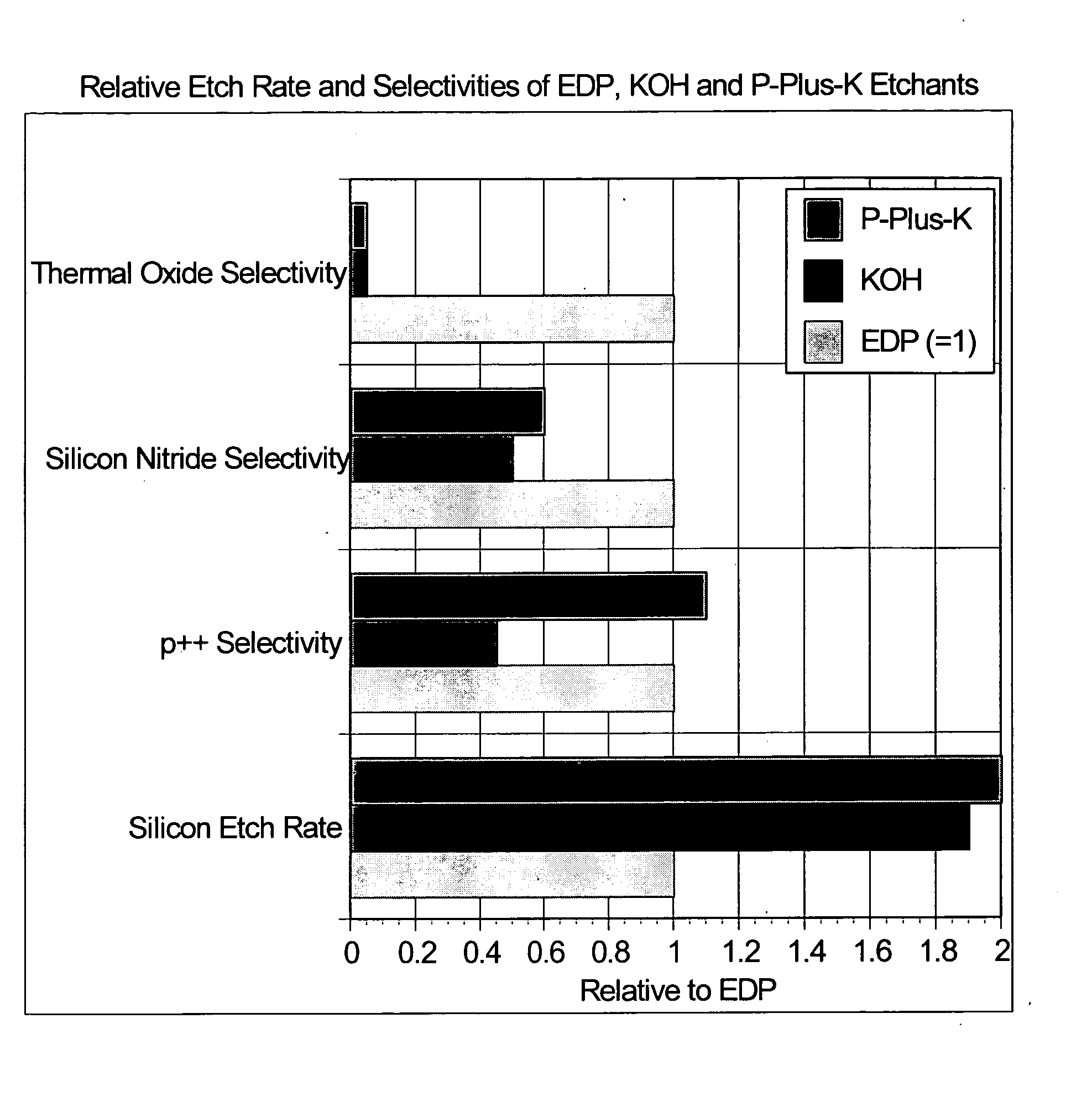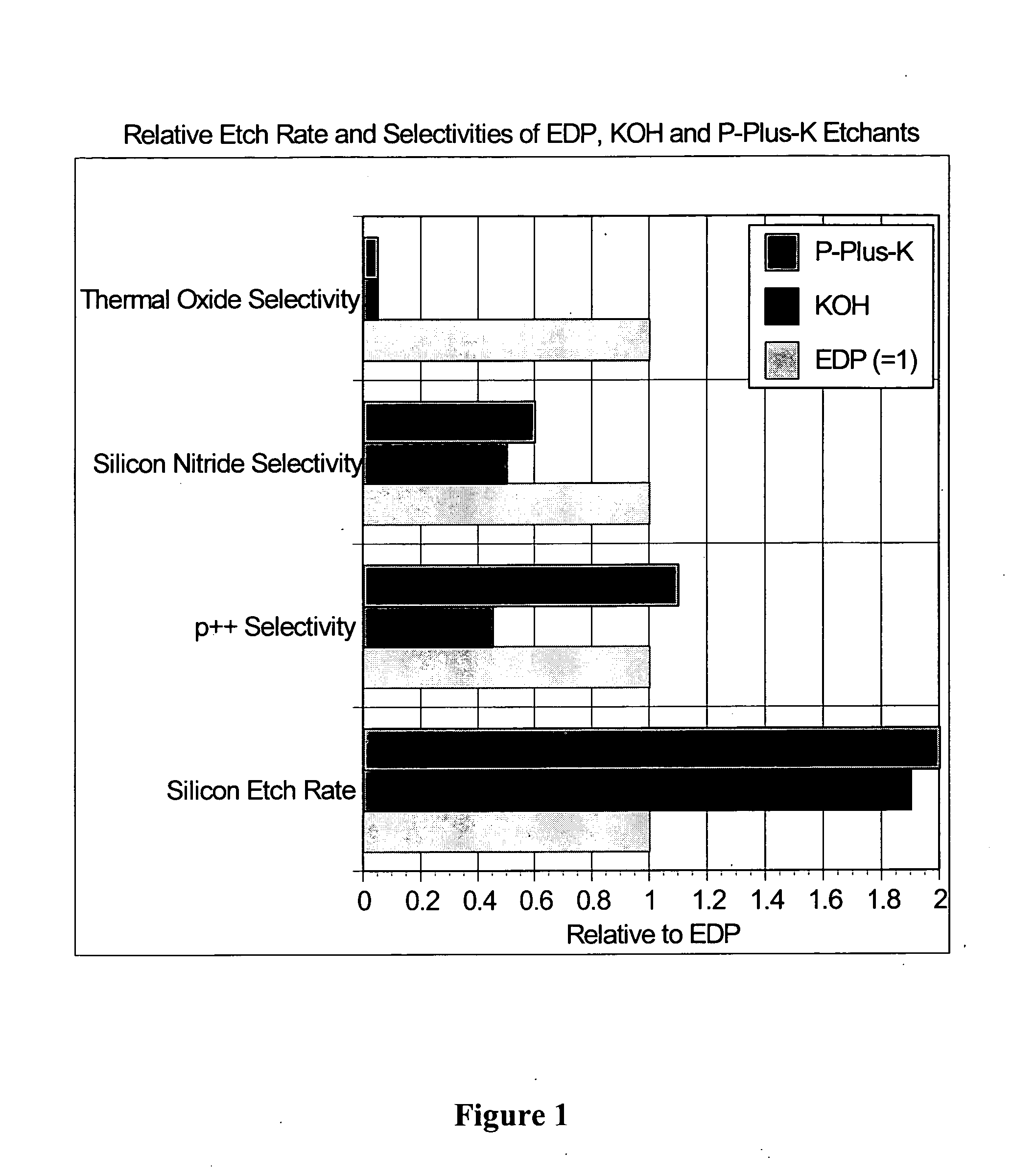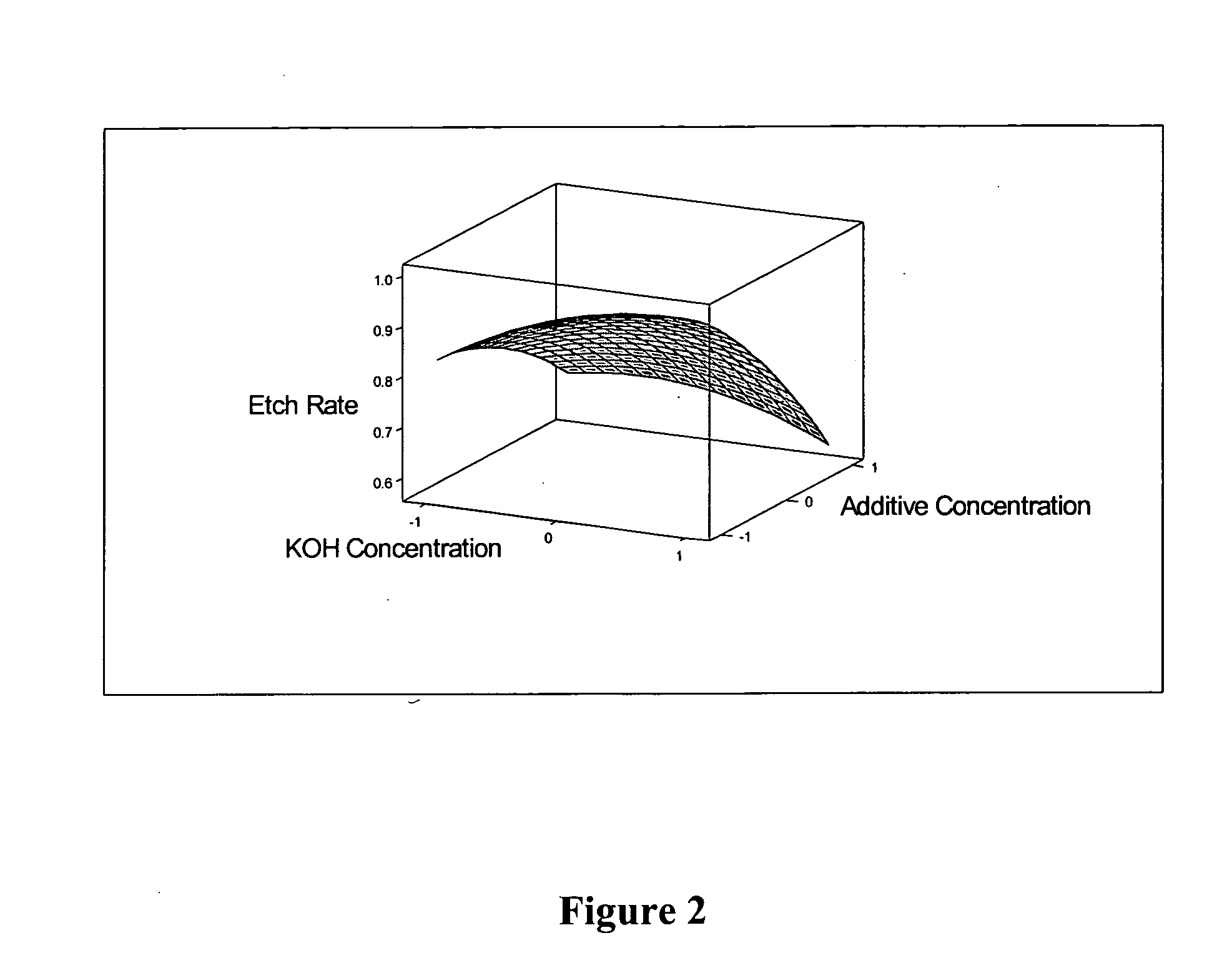Selective silicon etch chemistries, methods of production and uses thereof
- Summary
- Abstract
- Description
- Claims
- Application Information
AI Technical Summary
Problems solved by technology
Method used
Image
Examples
examples
P-Plus-K Experiments
Design of experiment (DOE) studies were conducted to determine etch rates and selectivities as a function of KOH and additive concentration as well as temperature. A response surface Box-Behnken design with high, medium and low settings of each of three factors was used. The factors utilized were temperature, ethylene glycol concentration and KOH concentration. A 3-factor Box-Behnken response surface design with 3 center points consists of a total of 15 experiments. Table 1 below shows the factors utilized and their values:
FactorHighMiddleLow45% KOH Concentration (v / 0) 171411Ethylene Glycol 504030Concentration (v / 0)Temperature (° C.)1059585
Etch rates and etch selectivities of p++ doped silicon, undoped silicon, thermally grown silicon dioxide (TOx), low temperature deposited silicon dioxide (LTO) as well as sputtered silicon nitride (Si3N4) films as a function of KOH concentration, ethylene glycol concentration, and temperature were measured employing desig...
PUM
 Login to View More
Login to View More Abstract
Description
Claims
Application Information
 Login to View More
Login to View More - R&D
- Intellectual Property
- Life Sciences
- Materials
- Tech Scout
- Unparalleled Data Quality
- Higher Quality Content
- 60% Fewer Hallucinations
Browse by: Latest US Patents, China's latest patents, Technical Efficacy Thesaurus, Application Domain, Technology Topic, Popular Technical Reports.
© 2025 PatSnap. All rights reserved.Legal|Privacy policy|Modern Slavery Act Transparency Statement|Sitemap|About US| Contact US: help@patsnap.com



